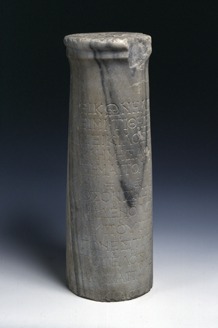The First "Pieces" of Music
Thoughts on Notation
"People sang and played instruments long before ways of writing music down on paper were invented. Even today, nearly everyone can sing, though not everyone can 'read' music. Many people can also play instruments without being able to read a note of music: like some of the great jazz musicians, they play 'by ear'.
Clearly, it is perfectly possible to make music without having it written down. Indeed, when one considers the world's music as a whole, one finds that the use of music notation (written signs representing musical sounds) is actually quite rare. Many countries in the East, for example, have ancient musical traditions which are very beautiful and sometimes very elaborate, yet which make little (if any) use of notation. Their musicians scarcely ever learn from written-down music or use it when they are performing.
In Europe, however, the use of notation became central to the development of music. At first (well over a thousand years ago) it amounted to nothing more than a few simple signs inserted in books containing the words of texts chanted in monasteries. These signs were only rough reminders: they helped the monks to recall music which they had learn in the past but had not sung recently. Gradually the signs became more detailed, until they ceased to be mere reminders and became [more] exact guides. Musicians were enabled to perform music straight from the notation: they no longer had to memorise it. This development helped the spread of new music, for once a piece had been written down it could be performed by other musicians - perhaps living miles away - even though they had never heard it. Even more important, the use of music notation opened the way to more and more complicated music. It became possible for a composer to work out how several singers or players could have independent parts which would nevertheless sound well together, and then to provide each of the performers with the appropriate notation...
...Beethoven's symphonies would have stayed in his head and we should never had heard them if he had not been able to write them down on paper, and if performers did not understand exactly what his written signs meant...
As with spoken language, musical language is always developing...Some musical signs which once were common are now rarely found; others have changed their meaning. New musical ideas have necessitated new developments in notation."
- Eric Taylor
The Oldest Notated Compositions
The history of music is likely to be nearly as old as humanity itself. Archaeologists have found primitive flutes made of bone and ivory dating back as far as 43,000 years, and it is likely that many ancient musical styles have been preserved in oral traditions. When it comes to specific compositions, however, the oldest known examples are relatively recent.
"Hurrian Hymn No.6" is considered to be the world's earliest melody, but the oldest musical composition to have survived in its entirety (not just in fragments) is a 1st (or possible 2nd) century A.D. Greek tune known as the Seikilos Epitaph. The song was found engraved on an ancient marble column used to mark a woman's (possibly his wife, Euterpe - also the name given to the Muse of music) grave-site in Turkey. The inscription reads:
"I am a tombstone, an image...Seikilos placed me here as an everlasting sign of deathless remembrance."
The column also includes musical notation as well as a short set of lyrics (from the Greek word lyrikos "singing to the lyre") that read:
While you live, shine
Have no grief at all
Life exists only for a short while
And time demands its toll.
 |
| Marble stele, the so-called Seikilos column, with poetry and musical notation. |
Listen to a modern-day interpretation of the Seikilos Epitaph here:
 |
| The Seikilos "score": the inscription above each line of the lyrics consists of letters and signs indicating the melody of the song. |
 |
| An approximate translation of the tune into modern musical notation |
Transliterated text:
hóson zêis, phaínou
mēdèn hólōs sù lupoû
pròs olígon ésti tò zên
tò télos ho khrónos apaiteî.
Sources: The AB Guide to Music Theory (Eric Taylor), history.com (Andrew Evans), Wikipedia
Comments
Post a Comment